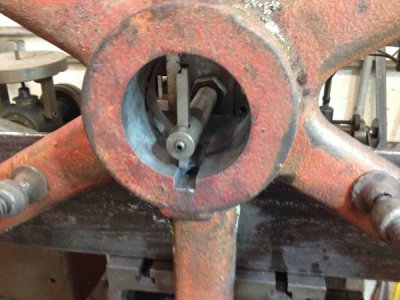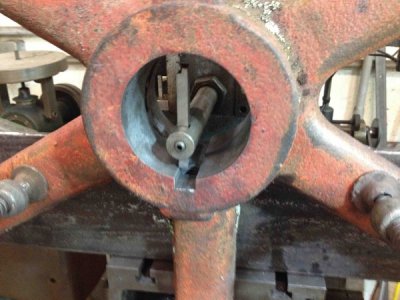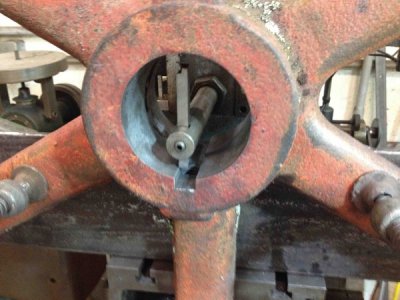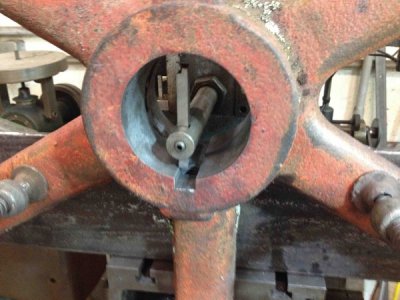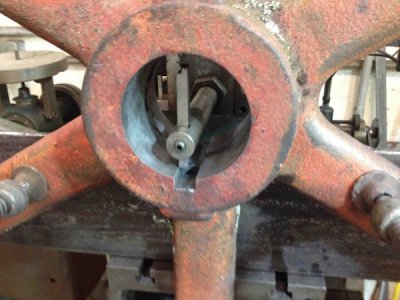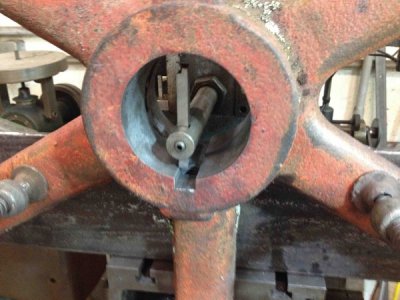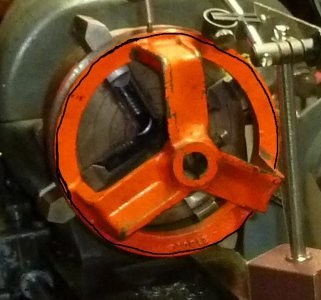- Joined
- Dec 27, 2014
- Messages
- 658
haha!
It looks a bit big for your chuck.
Just stand to one side when you start it, keep the RPM's low and keep the cuts to under 0.010" deep and you should survive.
Don't expect a good finish, a hole that small needs RPM's in the 400 or greater range, but I wouldn't run it faster than 200ish (even that might be scary).
The good thing about boring is that you can stand to the right of the carriage and out of harms way. Those jaws will eat body parts sticking out like that, walk a wide path around them.
Also, do not over tighten the jaws. It is easy to warp the jaw-ways or damage the threads when not enough jaw is engaged. Get them snug plus a bit, not cranked down. You can add some paper between the jaw and the work to increase friction. Boring pushes into the chuck, so it only needs to be tight enough to keep it from slipping.
Projects like this push the limits of both machine and operator will make you more skilled in the end and give you a much better idea of limits. Just keep your heap, use common sense, and don't get greedy.
It looks a bit big for your chuck.
Just stand to one side when you start it, keep the RPM's low and keep the cuts to under 0.010" deep and you should survive.
Don't expect a good finish, a hole that small needs RPM's in the 400 or greater range, but I wouldn't run it faster than 200ish (even that might be scary).
The good thing about boring is that you can stand to the right of the carriage and out of harms way. Those jaws will eat body parts sticking out like that, walk a wide path around them.
Also, do not over tighten the jaws. It is easy to warp the jaw-ways or damage the threads when not enough jaw is engaged. Get them snug plus a bit, not cranked down. You can add some paper between the jaw and the work to increase friction. Boring pushes into the chuck, so it only needs to be tight enough to keep it from slipping.
Projects like this push the limits of both machine and operator will make you more skilled in the end and give you a much better idea of limits. Just keep your heap, use common sense, and don't get greedy.


